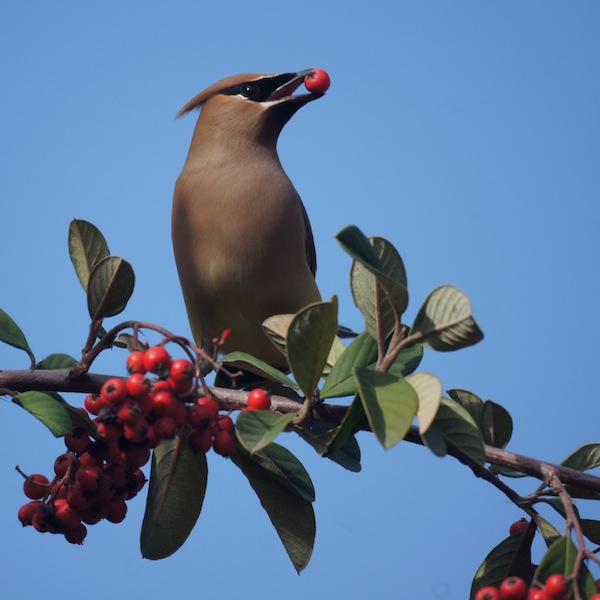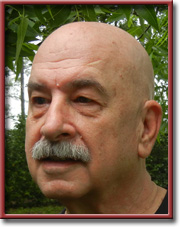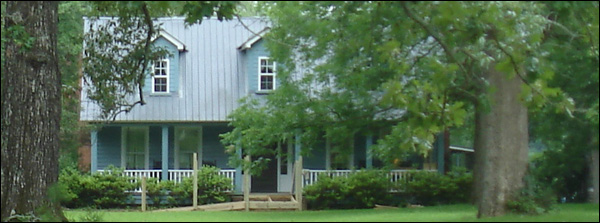Garden of Earthly Delights & More
“Gardeners often describe our joy at watching the many forms of wildlife which visit any given garden. Birds in particular bring color, movement, and pleasure to the gardener’s experience. I’ve only recently succumbed to actually trying to attract birds and wildlife to my garden, having experienced a constant flow of creatures since creating it.” William A. Balk, Jr.
Epicurus’ Porch
By William A. Balk, Jr.

 BEAUFORT South Carolina—(Weekly Hubris)—6/17/2013—Gardeners probably have as many reasons for not gardening as we do for actually gardening. Fortunately for most of us, the urge to get dirty and the craving for luscious home-grown produce or the joy of brilliant flowers and varied foliage overwhelm any tendency toward complete abandonment. Most of the time, anyway.
BEAUFORT South Carolina—(Weekly Hubris)—6/17/2013—Gardeners probably have as many reasons for not gardening as we do for actually gardening. Fortunately for most of us, the urge to get dirty and the craving for luscious home-grown produce or the joy of brilliant flowers and varied foliage overwhelm any tendency toward complete abandonment. Most of the time, anyway.
The truth, of course, is that fresh garden fruits and vegetables and colorful swaths of blooms are only part of the impulse to dig in the dirt. The temptations and rewards are as individual as the gardener. I’ve confessed to a collector’s impulse (not, you notice, a “hoarder’s impulse”), which moves me to acquire many—indeed, sometimes too many—species and varieties of a plant type in order to experience with my own hands its range of peculiarities, requirements and rewards. It provides an avenue for pursuing new knowledge and experience, and frequently introduces us to new people with similar pursuits and impulses.
Gardeners often describe our joy at watching the many forms of wildlife which visit any given garden. Birds in particular bring color, movement, and pleasure to the gardener’s experience. I’ve only recently succumbed to actually trying to attract birds and wildlife to my garden, having experienced a constant flow of creatures since creating it.
But lately, my elderly mother hasn’t been able to walk in the garden; so I’ve taken to trying to bring the wildlife and birds to her. My brother’s partner gave Mama a bird feeder several years ago; I’ve moved the feeder to hang beneath a weeping yaupon (Ilex vomitoria) at the corner of the big screened porch across the back of her house. I’ve just rigged a fountain/bird bath nearby, using an old hose, an old cake pan and an old plant stand. I think the effect is rustic. It tends to drip a bit, so I put another dish right on the ground to catch the overflow. Nearby we’ve hung an ancient hummingbird feeder.
All three of these seem to do the trick. Mama’s family can sit at the table on the porch and watch a constant stream of activity. The siting of the feeder beneath the yaupon holly is fortuitous: the weeping branches provide resting spots between feedings for all avian visitors, and cover for smaller birds who need to hide out from the bullying cardinals. The masses of red berries in the fall, winter, and early spring are like caviar to hungry migrating birds. The orioles go crazy as they head south for the winter. These last few weeks have kept us entertained with two pairs of painted buntings, a pair of indigo buntings, two pairs of blue grosbeaks, goldfinches, Carolina wrens, towhees, kingbirds, purple finches. The cardinals, of course, rule the roost; they pretty much police the area, with the juvenile males constantly chasing each other away and the adults trying to ignore them.
The just-finished bird bath hasn’t become the attraction it will be once the weather becomes hot and dry.
We did get a wonderful pair of quail, which I spotted once they emerged from the wide field beyond the pine windbreak. To get to the edge of the yard, they’d crossed some 500 feet of fallow field. They then picked their way across another couple of hundred feet of lawn, heading directly for the bird bath —actually the drip-catcher on the ground below the bath. They spent ten minutes there taking sips, catching insects among the ground covers, and splashing in the dish. Then they made their way back across the lawn, across the field, to the woodland edge where they nest.
The old hummingbird feeder does bring the hummers in. So far, the numbers are fairly small; later the raucous mid-air fights for control will pit a dozen or more against each other. To provide some sustenance for the poor birds on the losing end of these fights, I have a Turks Cap shrub (Malvaviscus arboreus) close by. It begins blooming about the time the hordes of hummingbirds arrive from South America, and they really love going for the nectar hidden deep in the folded-up blooms. I was surprised to spot one hummer last week sipping nectar from one of the flowering Crinum lilies. I’d never seen that before, but I suppose it isn’t that unusual: we sometimes see gigantic sphinx moths ganging up around dusk on the Crinum asiaticum blooms.
Another impetus actually to get out and garden is to maintain treasures shared from other gardeners. These pass-along plants often are the old-fashioned ones that seem no longer to be fashionable among commercial sources; a fellow gardener may be the only way to get one of them.
The huge mop-head hydrangeas that grow along the side of my farmhouse all derive from cuttings provided by a neighbor a quarter century ago, whose own plants had been taken from an old churchyard near the Edisto River.
The briefly-flowering white “cemetery iris” (Iris albicans) that grows here beneath some oak trees, and in the middle of the lawn, and out by the old wood pile, is hardly rare. But it is rarely seen for sale. It is ancient in origin, having been planted by graves in Muslim cemeteries since 1400 at least. Mine at the farmstead were retrieved from the ruined site of my great-great-great grandfather’s house near the Savannah River; they’re identical, of course, to those found in countless churchyards throughout the South, but these are special and unique in my eyes.
Gardeners are often the fortunate recipients of gifts of plants. My mother has been given a number of orchid plants, and I do my best to keep them going after their show. My friend Alice gave me a cutting from her orchid cactus two years ago, as well as an amazing variegated hibiscus relative, and numerous seedling amaryllis. This year, the orchid cactus (Epiphyllum sp.) almost covered itself in huge glowing fiery red cactus flowers—spectacular!
My friend Chris gave me a small potted “olive tree.” I moved it into a bigger pot and, to my surprise, the thing bloomed! Today, I went out to check on it, and now it has dozens of tiny, tiny green olives on it. From here to Extra Virgin Olive Oil!
Beaufort friends Ann and George Courmouzis have nothing to fear from me and my olive “orchard,” though.
The Courmouzises are the source for that incredible EVOO called “Corvus,” and some of you locals have doubtless talked to Ann at her booth at the Port Royal Farmers Market. She brings olive oil from their farmers’ cooperative in Lakonia in the Peloponnese in George’s native Greece. There’s no way I’ll get a bottle of oil from my “tree,” much less an award-winning nectar like theirs. But the enjoyment of Chris’s gift tree will continue, season after season, like the pleasure of tasting Ann and George’s oil.
Gardeners will easily find good reason to head back out to the garden, even if the work demanded seems, on occasion, overwhelming. Edifying strolls and hands in the soil; celebrating shared gifts; recalling good friends and good times—the garden provides far more than visual and gustatory pleasure.

Note: William Balk’s columns appear regularly in the Lowcountry Weekly at http://www.lcweekly.com/homeold.
The Illustration for this column derives from http://farm9.staticflickr.com/8107/8462486806_7f0cc1f069_o.jpg.

3 Comments
teresabrucebooks
What a son Will’s mother has – to bring the birds to her. May hummingbirds dance for all her days.
Will Balk, Jr
Theresa, your thought is so lovely. You have been so busy with the new book on the modern Isadora Duncan, Byrne Miller, I am honored you took a moment to visit here. Thank you!
Will Balk, Jr
Oh! Teresa – the comments about your TED talk have been super! I wish I could have been there…guess I’ll have to look up YouTube!